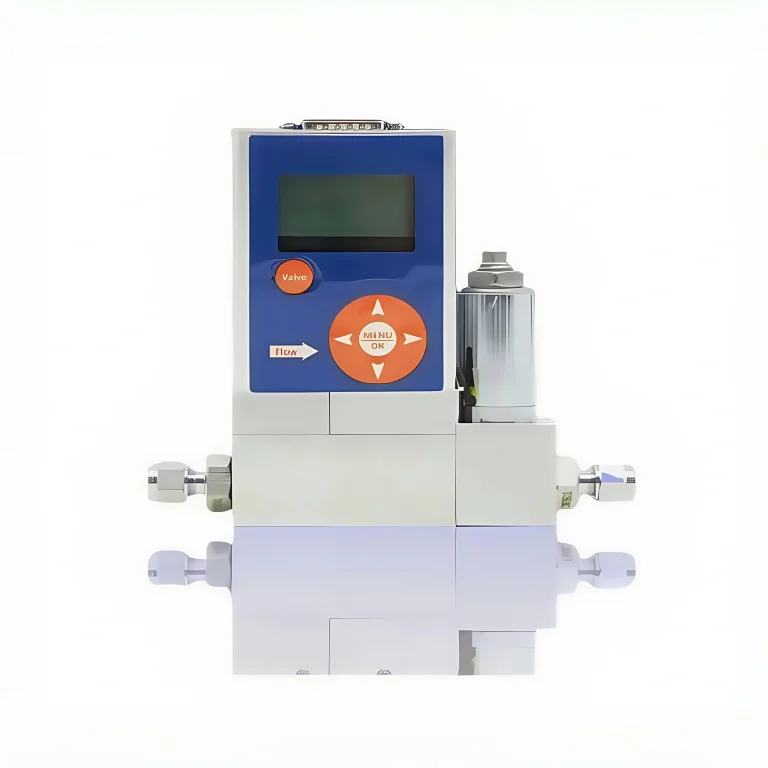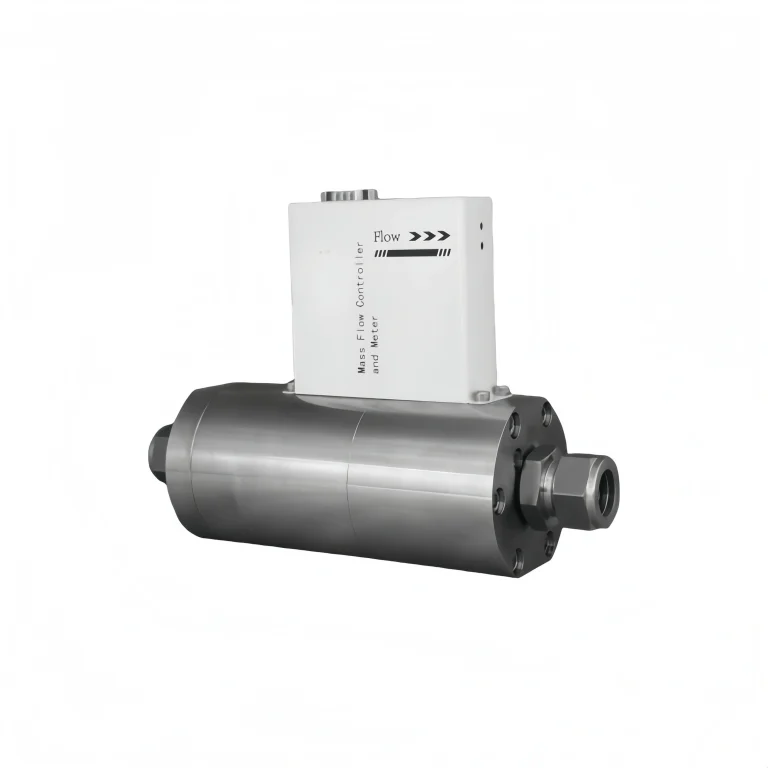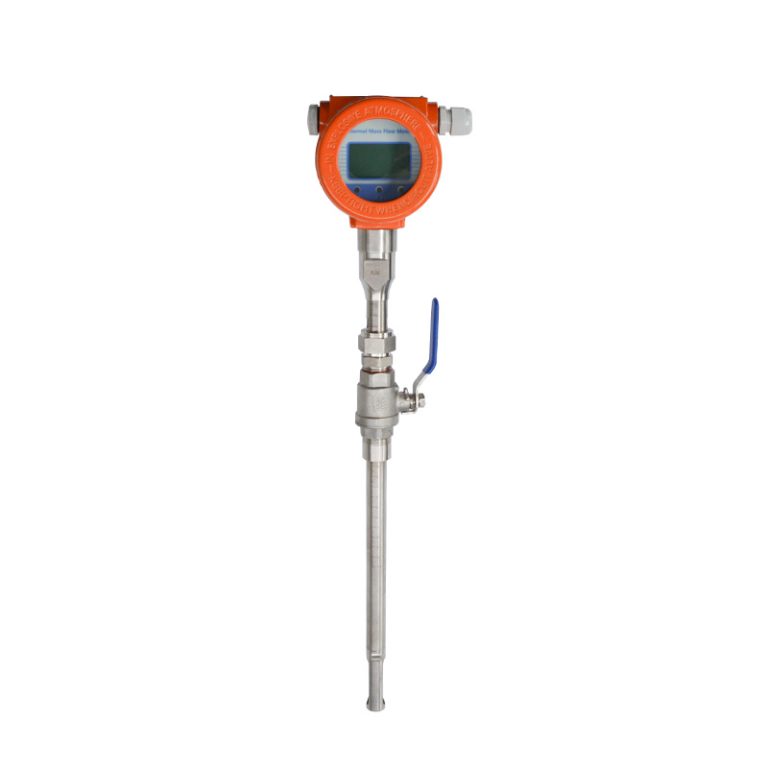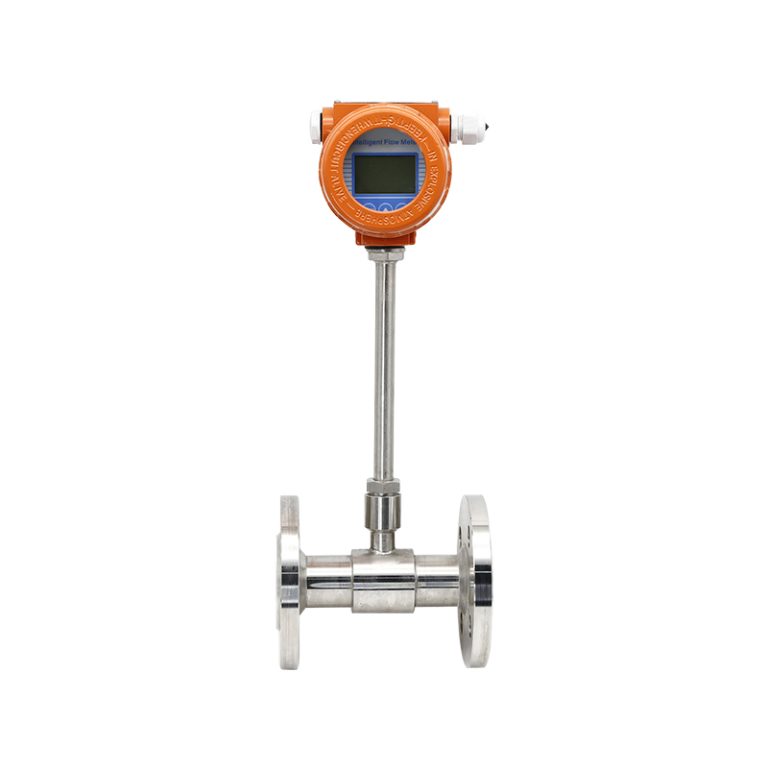Reliable Thermal gas Mass Flow Meters-Manufacturer Supply
Thermal gas mass flow meter is an instrument that uses the principle of thermal diffusion to measure gas flow. Sino-Inst’s thermal gas mass flow meters are available in insertion type and inline pipe section type.
●A true thermal gas mass flow meter that does not require temperature and pressure compensation for gas flow measurement, making measurement convenient and accurate. The mass flow rate or standard volume flow rate of the gas can be obtained.
●Wide range ratio, can measure gas with flow rate as high as 120Nm/s and as low as 0.1Nm/s. Can be used for gas leak detection.
●Good seismic resistance and long service life. The sensor has no moving parts and pressure sensing parts, and is not affected by vibration on measurement accuracy.
● Easy to install and maintain. If site conditions permit, non-stop installation and maintenance can be achieved. (Special customization required)
● Digital design. Overall digital circuit measurement, accurate measurement and easy maintenance.
● The thermal gas mass flow meter adopts RS-485 communication or HART communication. It can realize factory automation and integration.
●The power supply is optional AC220V, DC24V or AC220V, DC24V dual power supply.
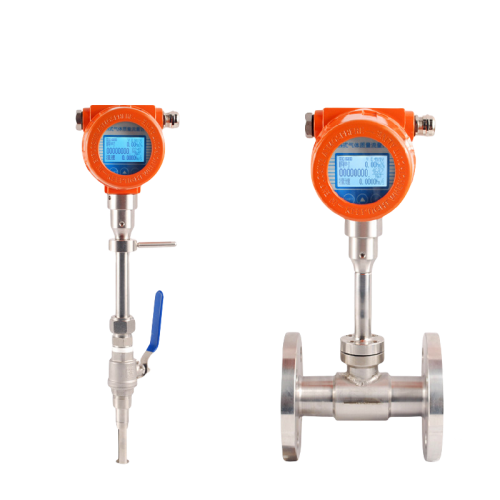
Thermal gas mass flow meter Series
Thermal gas mass flow meters directly measure and display the mass flow rate or normalized volume flow rate of gases without any additional pressure and temperature compensation. Our Sino-Inst Thermal gas mass flow meters can measure various gases (unstable media such as acetylene and boron trichloride cannot be measured). Pipe type: DN10~DN300; insertion type: DN65~DN4000 are optional. Supports 4-20mA, pulse signal output, and uses RS485 communication or HART communication to realize factory automation measurement and control.
Based on your measurement conditions, we will provide you with separate selection services. Try to meet your various gas measurement and control needs.
We have sufficient inventory of thermal mass flow meters. The delivery time of regular products can be shortened to 2~3 working days.
Our Sino-Inst thermal gas mass flow meter operates stably. For our products, we provide free 1-year warranty service.
As a manufacturer, we offer you the best thermal meters prices. Save your purchasing costs to the greatest extent!
Choose Sino-Inst Thermal mass flow meters for stable gas mass flow measurement
Gas mass flow meters are widely used in steel plants, coking plants, petroleum, chemical industry, thermal power, medical treatment, thermal power plants, environmental protection and other industries.
The digital thermal mass flow meter directly detects mass flow without temperature and pressure compensation. Display content: temperature, instantaneous flow, cumulative flow
Especially in gas flow measurement of high temperature, high pressure, large diameter pipelines, etc., Thermal gas mass flow meter has more advantages.
As a thermal mass flow meter manufacturer, our Sino-Inst flow meters rely on their wide range ratio and strong stability. They have passed the quality audit of the user unit and have been successfully used in various industries such as compressed air measurement, air measurement and measurement, and nitrogen measurement.
Efficient Direct Gas Mass Flow Measurement
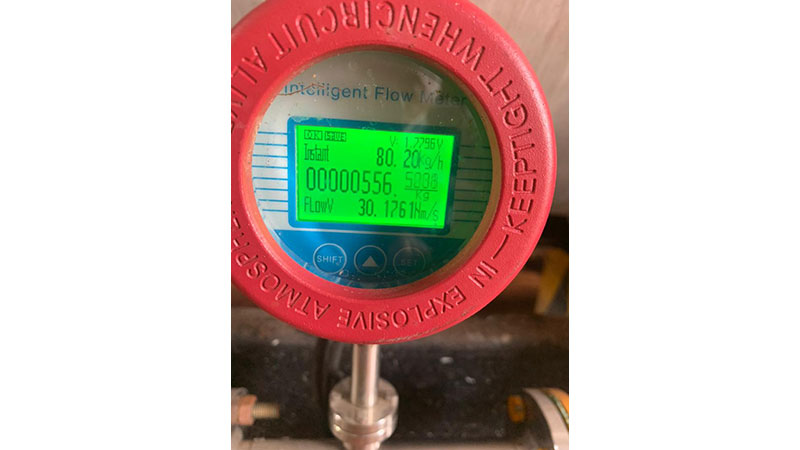
Thermal mass flow meter measuring LPG
In the oil and gas industry, thermal mass flow meters can meet the mass flow measurement of liquefied petroleum gas and natural gas.
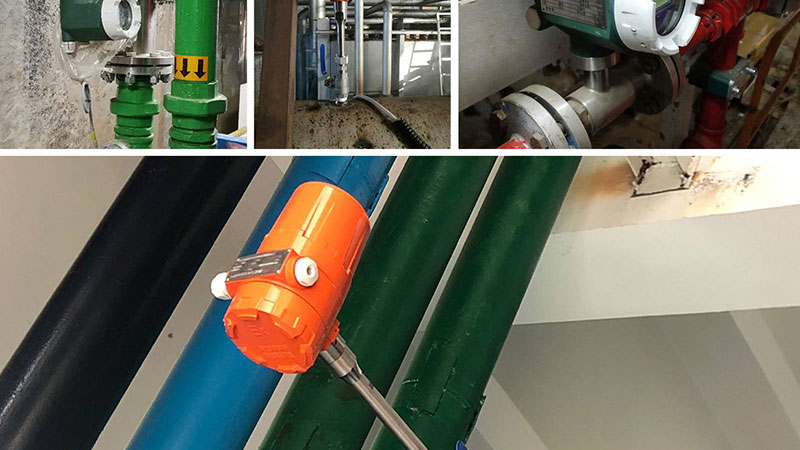
Digital thermal mass flow meter in the power industry
The digital thermal mass flow meter can be used for gas measurement during gas distribution in fuel systems. As well as the measurement of primary air and secondary air in power plant blast furnaces.
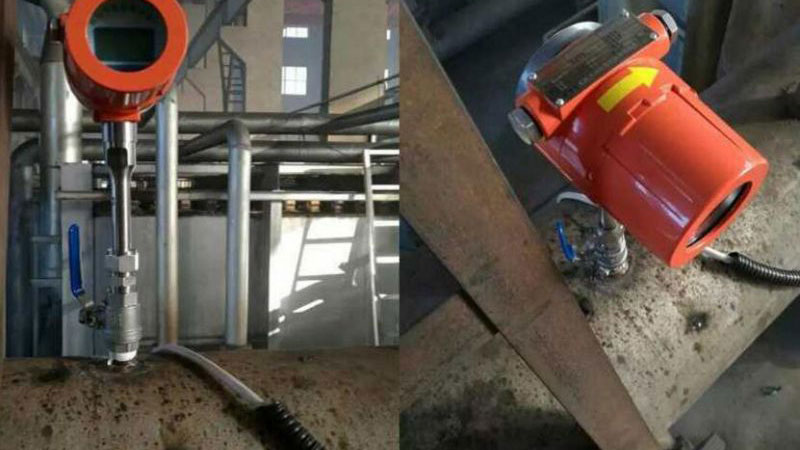
High temperature thermal mass flow meter for metallurgical industry
High temperature thermal mass flow meter can meet the requirements of the measurement of blast furnace gas in iron plants and the measurement of coke oven gas in coking plants.
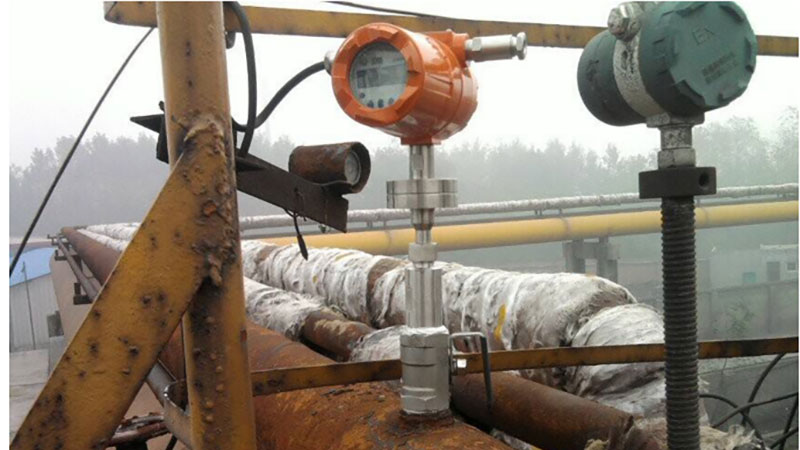
Thermal Mass Flow Meter Measures Combustion Air
Thermal mass flow meters are widely used to measure the flow of high-temperature gases. An example is combustion gas flow measurement in a refinery. In the steel industry, it is also widely used to measure the flow of high-temperature gases, such as blast furnace gas, converter gas, etc.
More Information
| Pipe diameter range: | Pipe type: DN10~DN300; insertion type: DN65~DN4000 are optional. |
| Flow rate range: | 0.1~100Nm/s |
| Accuracy: | ±1.5-2.5% |
| Repeatability: | 0.2% full scale |
| temperature range: | Ambient temperature -20℃–70℃ |
| Medium temperature: | -20℃-200℃ or -20℃-350℃ |
| Power supply: | 24VDC/220VAC |
| Analog output: | 4-20mADC, pulse optional |
| Response time: | ≤1 second |
| Temperature Coefficient: | 0.05%/℃ |
| Communication Interface: | RS485, HART optional |
| Alarm Output: | 1~2 way relay normally open contact 10A/220V/AC 5A/30V/DC |
| Show online: | LCD displays instantaneous and cumulative flow, standard flow rate, etc. |
| Process pressure: | ≤1.6MPa (pressure greater than this needs to be negotiated and customized with our company) |
| Process connection: | Pipe flange type, threaded type, clamp type, insertion type, insertion type with ball valve, flange insertion type |
| Explosion-proof level: | ExdIICT4 |
| Protection level: | Sensor IP67, transmitter IP65 |
| Applicable media: | Gas without moisture |
| Measuring range: | 0.05–80m/s (standard condition is 20 ℃, 0.10133MPa) |
| Sensor material: | The standard is 316L; HaC; Tantalum |
| Probe rod material: | The standard is 1Cr18Ni9Ti; 316L; Kazakhstan C; tantalum |
| shell material: | Hazardous area installation enclosure in powder-coated aluminum casting |
| Electrical Interface: | M20×1.5 |
| Pressure loss: | Can be ignored for pipes with diameter larger than DN80 |
| Display units: | NL/m、NL/h、Nm3/m、Nm3h、Lh、Kg/h、Kgm、th、tm、gS |
Main applications:
●Measurement of oxygen, nitrogen, hydrogen, chlorine and multi-component gases.
● Measurement of blast furnace gas and coke oven gas.
● Flue gas measurement.
● Aeration and chlorine measurement in biogas and water treatment.
● Compressed air measurement.
● Natural gas, liquefied gas, flare gas, and other gas flow measurements
● Primary air and secondary air flow measurement of power plant blast furnace
● Flow measurement of underground mine ventilation or exhaust system
●Air flow measurement during gas process
●Measurement of flue gas flow rate (velocity) from chimney (CEMS)
●Calciner flue gas flow measurement
●Gas flow measurement in the production process of cement, cigarette and glass factories
●Gas flow measurement in solvent recovery system
●Gas flow measurement during semiconductor chip manufacturing process
●Carbon dioxide gas flow measurement during beer production
●Gas flow (velocity) measurement in heating ventilation and air conditioning systems
●Combustion gas flow measurement in coal-fired boilers
●Real-time detection of flow rate (speed) in underground mine ventilation or exhaust systems
Thermal mass flow meter working principle
The thermal mass flow meter sensor section consists of two reference grade platinum resistance temperature sensors. When the instrument is working, a sensor continuously measures the medium temperature T1. The other sensor self-heats above the medium temperature T2. It is used to sense the fluid flow rate and is called a speed sensor.
The temperature △T=T2-T1, T2>T1.
When fluid flows through the sensor, the temperature of T2 drops as the gas molecules collide with the sensor and take away the heat from T2.
To keep △T constant, the supply current of T2 must be increased. The faster the gas flows, the more heat is taken away. There is a fixed functional relationship between the gas flow rate and the increased heat. This is the principle of constant temperature difference.
The format of gas velocity and power is shown as below:
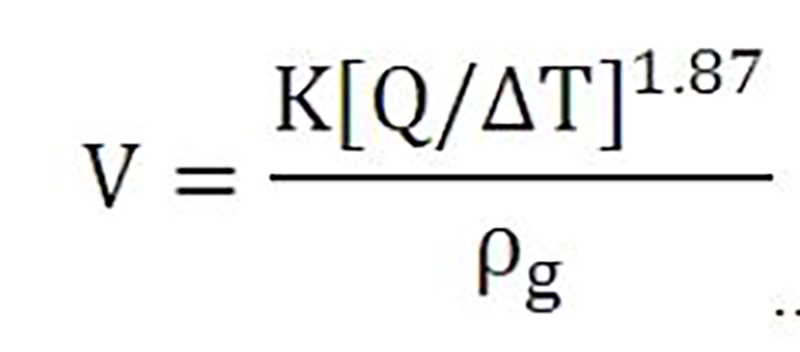
Where Pg is the specific gravity of the fluid (related to density)
V first flow velocity
K – balance coefficient
Q – Heating capacity (related to specific heat and structure)
△T-temperature difference
Since the sensor temperature is always about 30°C higher than the medium (environment) temperature, the thermal gas flowmeter does not require temperature in principle.
compensate.
The applicable medium temperature range of the thermal gas mass flow meter is -40~220℃.
In the formula, the specific gravity and density of the fluid are related:

in:
Pg – medium density under working condition volume (kg/m3)
pn – medium density under standard conditions (101.325Kpa, 20℃) (kg/m3)
P – working pressure (kPa)
T-working temperature (℃)
It can be seen from the above two equations that the functional relationship between flow rate and operating pressure, gas density and operating temperature has been determined.
Thermal mass flow meter advantages and disadvantages
Advantages of thermal mass flowmeter:
1. Overall digital circuit measurement, easy maintenance and accurate measurement;
2. Using RS-485 communication, factory integration and automation can be realized;
3. It is convenient to measure gas flow and does not require temperature and pressure compensation;
4. Wide range ratio, can be used for gas leak detection;
5. It is not affected by vibration on the measurement accuracy, and has good earthquake resistance and long service life.
6. The thermal mass flowmeter has no moving parts, and the thermal distributed instrument without a manifold has no flow obstructions and the pressure loss is very small.
Disadvantages of thermal mass flowmeter:
1. The use of pulsating flow will be restricted;
2. For small flow rates, the instrument will bring heat to the gas being measured;
3. If the measured gas easily deposits a scale layer on the pipe wall, which will affect the measured value, it needs to be cleaned regularly;
4. The use of viscous liquids is also restricted;
5. In places where the gas composition to be measured changes greatly, the measured value will change greatly, resulting in errors.
Coriolis vs Thermal mass flow meter
Thermal flow meters and Coriolis mass flow meters are common mass flow meters in industrial flow meters. They can all be used in some similar measurement ranges and application areas, but there are also significant differences.
1. Different measurement principles
Thermal Mass Flow Meter: Thermal mass flow meter determines the mass flow rate of a fluid by measuring the temperature difference during fluid transfer. It usually contains a thermal element, such as a thermocouple or thermistor, where one is heated and the other is used to measure the temperature change. When the fluid passes through the thermal element, it will take away heat, causing a change in temperature. By measuring the temperature difference, the mass flow rate of the fluid can be calculated. Generally used for gas measurement.
Coriolis force mass flow meter: Coriolis force mass flow meter uses the principle of Coriolis force to measure the mass flow rate of fluids. It consists of a vibrating tube or combination of vibrating tubes. When the fluid passes through the vibrating tube, the mass of the fluid changes the natural frequency of the vibrating tube. By measuring the change in frequency, the mass flow rate of the fluid can be calculated.
2. Different measurement accuracy
The measurement accuracy of the Cordial mass flowmeter is very high, which can reach 0.1% or higher, while the accuracy of the thermal flowmeter is usually ±1.5%.
3. Applicable fluids are different
Thermal mass flowmeter: Thermal mass flowmeter is suitable for measuring gas flow, such as air, nitrogen, etc. It performs well at low flow rates and over a wide range of temperature changes. For example, many smelting, petrochemical, and environmental protection projects measure the quality of air, nitrogen and other gases.
Coriolis force mass flowmeter: Coriolis force mass flowmeter can be used to measure gas and liquid flow. Especially suitable for complex fluids such as high viscosity, high viscosity and mud solutions. It has less effect on changes in fluid density, temperature and pressure and is used in a wide range of applications.
4. Different environmental conditions require
Although both flowmeters can operate in high temperature and high pressure environments. But Coriolis mass flowmeters are insensitive to changes in environmental conditions and fluid properties. The stability and reliability of thermal flow meters under high temperature and high pressure conditions may be affected.

